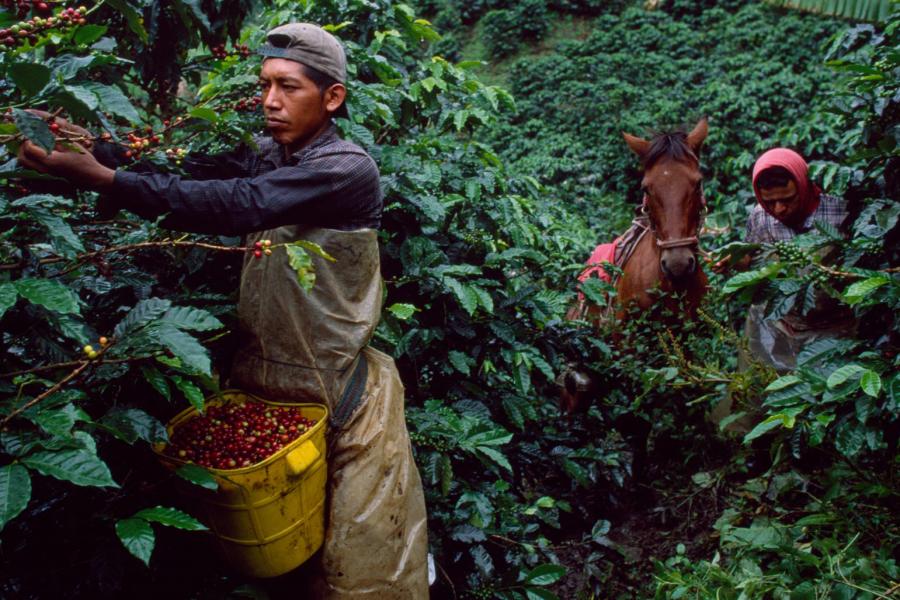A coffee bush gives up its cherry to Colombian workers, 2015

Date: 2015
Creator of the image: Steve McCurry Date of the image creation: 2015 Medium: Photograph Persons depicted: Two coffee harvesters, Columbia The photograph depicts two workers and a horse as they weave their way along the steep slopes of a coffee plantation in La Esperanza, Columbia. Columbia is the world’s third largest producer of coffee after Brazil and Vietnam, exporting about 700,000 metric tons in 2014. This photograph was taken by Steve McCurry and was published in a book called ‘From These Hands: A Journey Along the Coffee Trail’. This work documents McCurry’s travels through the world’s equatorial coffee-producing countries, capturing the work and everyday life of the people who tend to the plants that create those beans. The plant, Coffea arabica, was indigenous to the highland forests of Ethiopia, and has been cultivated since at least the fifteenth century in Yemen. These evergreen shrubs produce clusters of fragrant white flowers that burst into bloom simultaneously. The self-pollinating flowers form into a ‘cherry’, which grows and takes between six to eight months to ripen, changing from green to yellow, then crimson to black. The cherry are harvested in what can be a highly labour-intensive process, and then stripped of their flesh, leaving two beans from the core of the fruit. (NB. in the case of coffee, the plural is ‘cherry’, not ‘cherries’ as in the sweet stone fruit.) These beans are then fermented, washed and dried, before being roasted and then ground, infused with hot water and drunk. The British newspaper, ‘The Independent’, citing a study by the Climate Institute, has warned that coffee could completely disappear from the Earth by 2080 if global warming continues at its current rate.
Quotes
No quotes found.
Login to add a quote